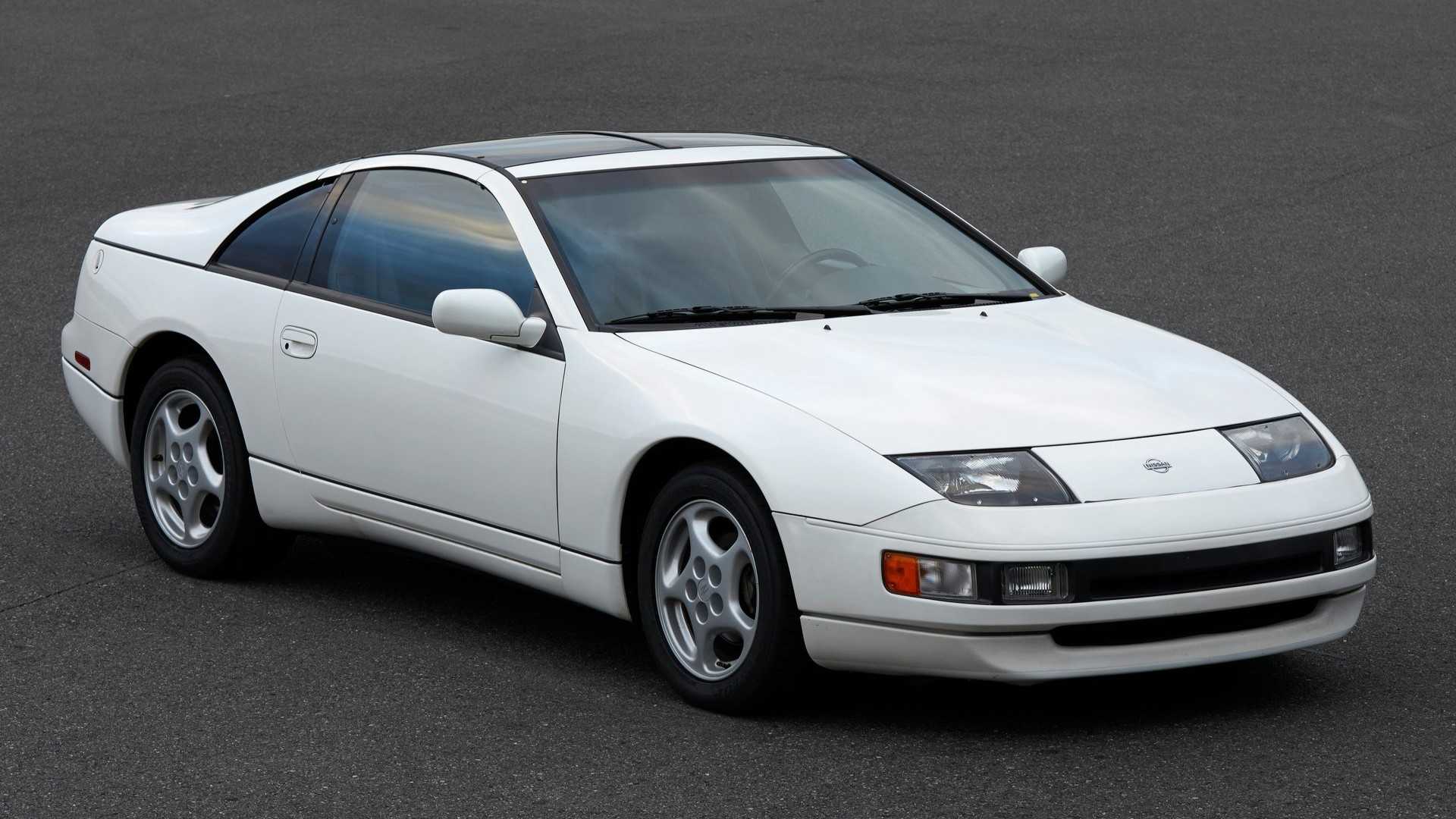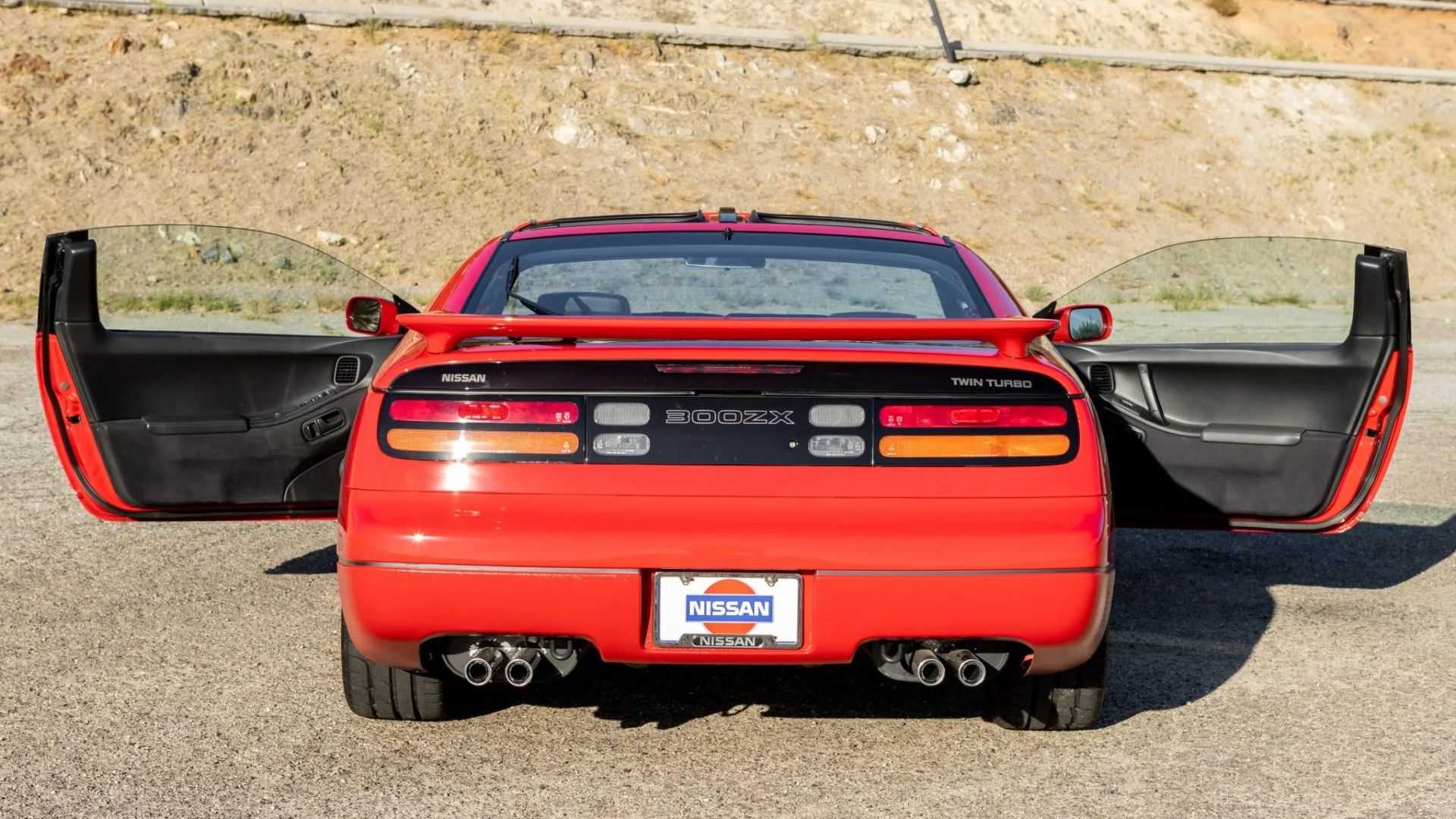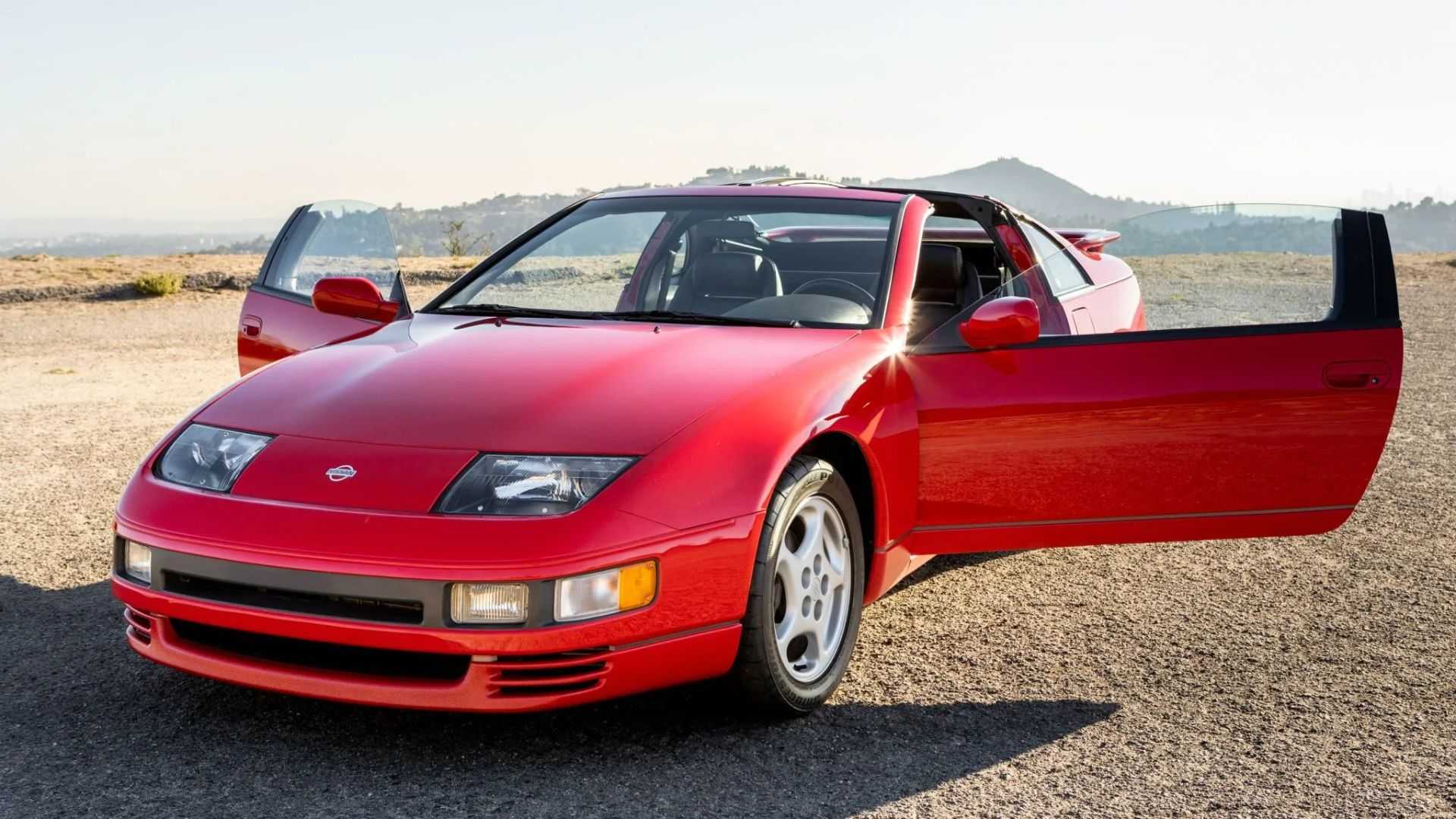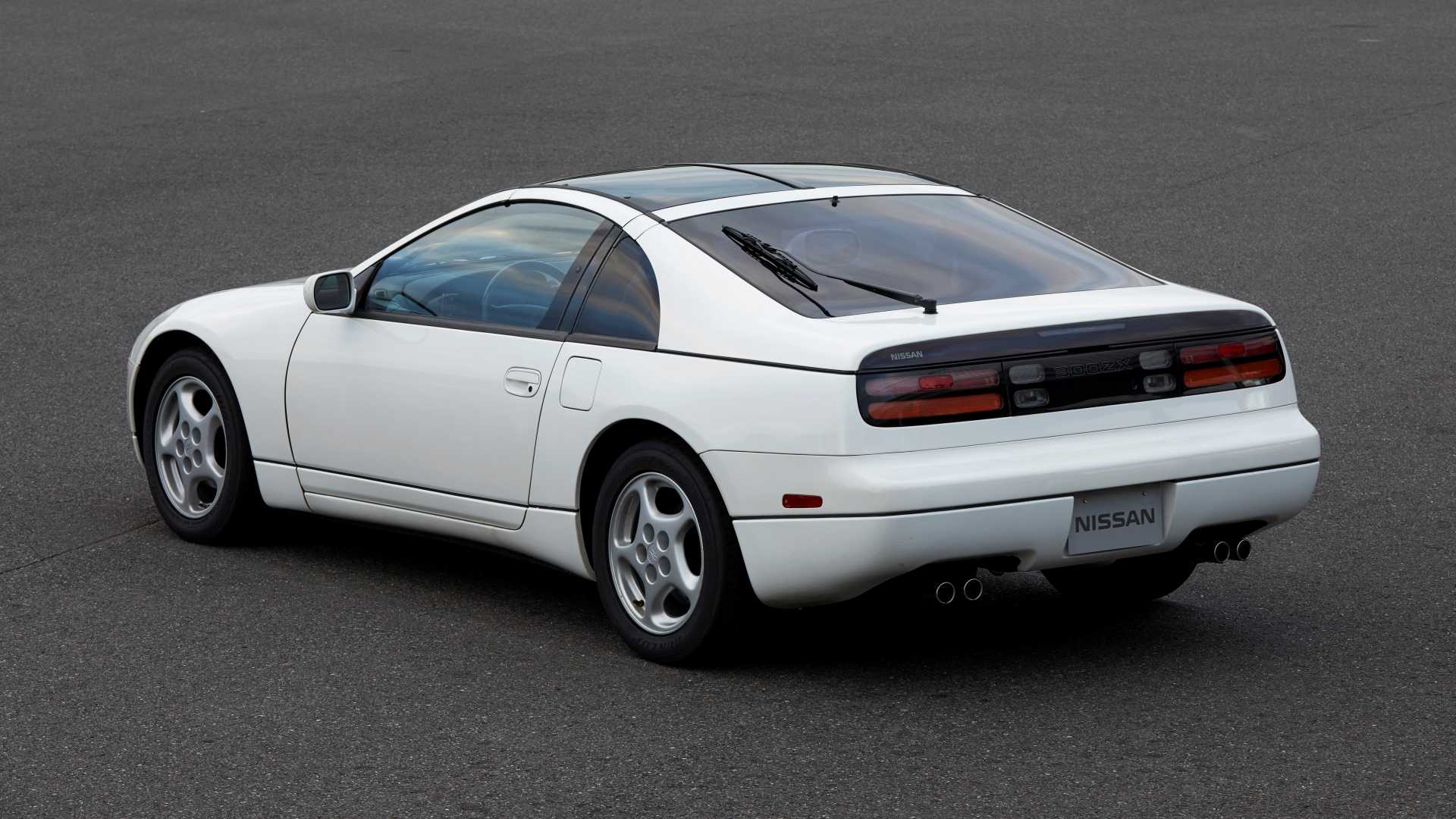Quick Links
-
The Nissan 300ZX was destined for failure from the start.
-
Expenses Began High and Soared
-
Customers Began Seeking Alternatives
-
The 300ZX was still an excellent vehicle.
- Legendary Performance
- Aftermarket Potential
- The Legacy Remains
-
The 300ZX Was in the Correct Location - But at the Incorrect Time
When Nissan When they unveiled the Z32 generation of the 300ZX, it truly shocked the car industry. It stood out for being highly advanced technologically and among the most progressive models at that time. Japanese cars The vehicle came equipped with either a naturally-aspirated or twin-turbocharged 3.0-liter V6 engine. It featured a high level of refined design typically not seen beyond European markets.
In fact, today's Nissan Z Is relatively straightforward compared to its predecessor, the Z32, which featured sophisticated electronics. Although the Z32 was impressive, it gradually turned into a symbol of excessive ambition. One might argue that it was simply too innovative for its era; however, several factors led to its ultimate downfall. This narrative delves into the tale of the Nissan 300ZX and its fleeting tenure in the American market.
We examined the performance of the Nissan 300ZX in the U.S. market to understand why it didn’t remain popular for an extended period. We considered aspects like cost, upkeep challenges, and how well it fit with consumer preferences at the time. The data presented here focuses specifically on the high-end variant equipped with dual turbochargers.
The Nissan 300ZX was destined for failure from the start.

Sophistication frequently brings with it complexity, and this proved both a major highlight and significant drawback for the Nissan 300ZX. Sadly, twin-turbo This specific version was highly sophisticated and complex, making such high-level performance engineering impractical for everyday owners. Take, for instance, how they squeezed the twin-turbocharged VG30DETT engine into a tight area. It’s a powerful V6 with dual intercoolers for the turbochargers as well—yet working on it could be quite challenging. While the engine itself was remarkable, performing simple maintenance tasks became extremely difficult due to the confined spaces involved. spark plug A mechanic might need to disassemble several parts first in order to carry out such a minor job, which naturally would increase both the working hours and the corresponding expenses.
Then there were the suspension And steering systems, which numerous people believed were overly complicated for their purpose. For instance, the vehicle featured the HICAS system. rear-wheel steering system This was far ahead of its era. Intended to enhance performance at high speeds, it turned out to be highly intricate and frequently puzzled numerous mechanics.
The electronically managed adaptive suspension might seem commonplace now, but back then, such technology was quite rare in most workshops. This kind of system demanded advanced diagnostic skills and expertise, which often turned out to be one of the vehicle's major trouble spots. Keep in mind that all of this occurred prior to the era of widespread adoption. OBD-II Diagnostics have impacted the automotive sector significantly. Additionally, seeking solutions wasn’t as straightforward back then since one couldn't easily look up information online. Many standalone garages weren't equipped to handle the Z32 properly either. Adding to this challenge, the car’s climate control system was entirely electronically controlled and tricky to repair when issues arose, making the overall situation even more critical.
Expenses Began High and Soared

The Z32 not only presented some challenges mechanically but was also rather expensive overall. Nissan invested heavily to craft a top-tier GT vehicle, yet significant funds were allocated towards manufacturing and development expenses. Consequently, these expenditures reflected in the final sale price. Back in 1989, you would have paid approximately $30,000 (equivalent to about $77,000 today) for a 300ZX. This figure was steep enough; however, by 1985, the turbocharged model approached an even higher cost nearing $50,000. To numerous consumers, this pricing edged too close to Porsche 911 region, and they weren't really prepared to draw parallels.
The 300ZX featured costly materials such as precisely molded plastics, high-end electronics, and numerous aluminum parts. Additionally, the volatility of the Japanese yen played a role and combined with these elements led to an increase in pricing that negatively impacted sales. While rival manufacturers might have included comparable performance attributes, they typically offered them at more affordable prices. Toyota came along with its Supra Turbo featuring its renowned 2JZ engine, while Mitsubishi brought the 3000GT VR-4 which had active aerodynamics and all-wheel drive.
According to certain reports, the profit margins for this vehicle were extremely narrow. Although Nissan might not have planned for it to become a top-selling model in large numbers, those making decisions would certainly prefer not to lose substantial amounts of money on it. Hence, maybe it shouldn’t come as too much of a shock that the 300ZX met its end once Nissan began experiencing financial difficulties.
Customers Began Seeking Alternatives
Adding insult to injury, consumers' tastes were evolving. This kind of car might have been popular in the early '90s, but as time went on into the latter part of the decade, people began shifting their interest elsewhere. SUVs Instead, there was minimal enthusiasm for a two-door coupe, which meant the 300ZX could not have become more popular. Upon examining its aggressive design and cramped interior, it becomes clear why this model became progressively less practical over time.
The 300ZX was still an excellent piece of machinery.

It appears unjust to focus solely on the negatives when we should acknowledge that the 300ZX was truly an exceptional vehicle, boasting a powerful engine delivering up to 300 horsepower and achieving a remarkable acceleration from 0 to 60 mph within just 5.5 seconds in its twin-turbo variant. Additionally, this car featured a broad stance and impressive aerodynamics, making it highly steady even at top speeds. Indeed, not many vehicles matched its level of aerodynamic efficiency—thanks to features like its sleek profile, integrated headlamps, and smooth body contours—which placed it among some of Europe’s most refined models. Inside, despite being compact, everything about the cabin felt purposeful, offering comfortable yet firm seating. bucket seats , a thoughtfully designed dashboard, along with driver-focused control features.
Legendary Performance
Given its impressive performance and striking appearance, the 300ZX quickly gained popularity among enthusiasts. Whether competing in time attacks or various motor sports events, it excelled remarkably well. Over time, numerous online forums and social media communities dedicated to the model emerged. Nowadays, finding such cars at auctions isn’t uncommon; however, those in excellent condition usually fetch higher prices due to their scarcity. This explains why a single, meticulously maintained, low-mileage, twin-turbocharged 300ZX was able to sell for up to $135,000 at auction.
Aftermarket Potential
Aftermarket enthusiasts appreciate this engine due to its untapped potential. Constructed with an iron block and featuring forged components inside, it can handle significant stress without issue. By installing an aftermarket twin-turbo setup, you could potentially boost horsepower beyond 450 HP. Additionally, numerous upgrades are available that can further enhance the performance and enjoyment of the 300ZX.
The Legacy Remains
The Nissan 300ZX certainly has a lasting legacy; however, despite declining sales, Nissan ultimately discontinued the model. Nonetheless, many contemporary vehicles still exhibit its impact. Indeed, the Nissan Z (the Z34) incorporates a twin-turbo V6 configuration heavily influenced by its predecessor, the Z32.
The 300ZX Was in the Correct Location - But at the Incorrect Time

To thrive and expand, companies need to anticipate future trends, yet the Nissan 300ZX was somewhat ahead of its time. Despite boasting commendable dependability and capabilities that would fare well under various conditions, the public demand hadn’t caught up with such advanced features. Additionally, maintaining the vehicle within an affordable price range proved challenging for Nissan, making it difficult to move off dealerships' lots.
Despite this, the automobile undoubtedly stood as a remarkable showcase of Nissan’s engineering aspirations. Amidst an industry focused on uniformity and excessive safety measures, the Z32 served as a testament that automotive manufacturers could still create iconic vehicles after all.
Sources: Nissan , Bring a Trailer.
